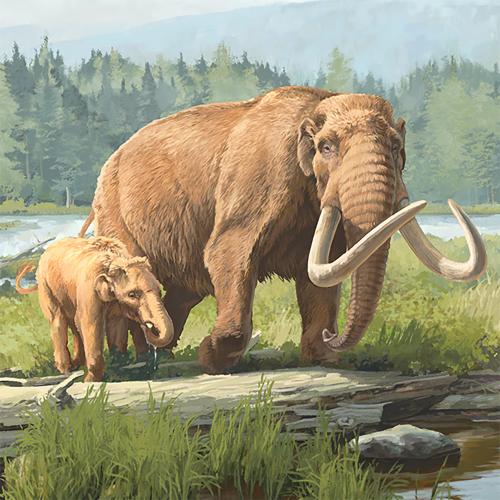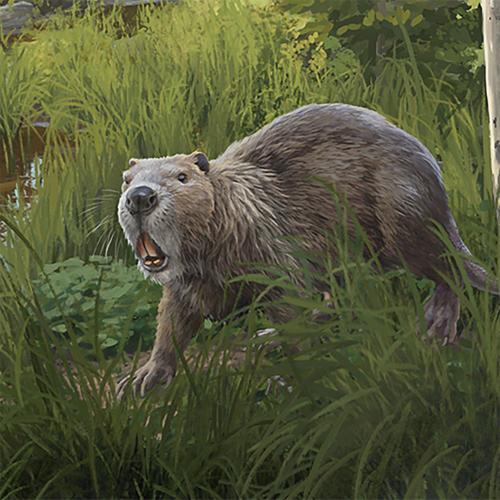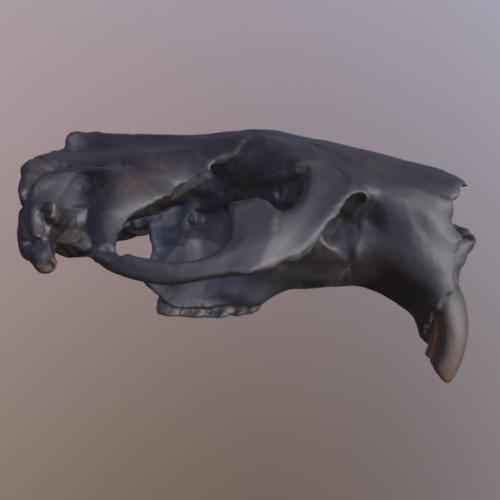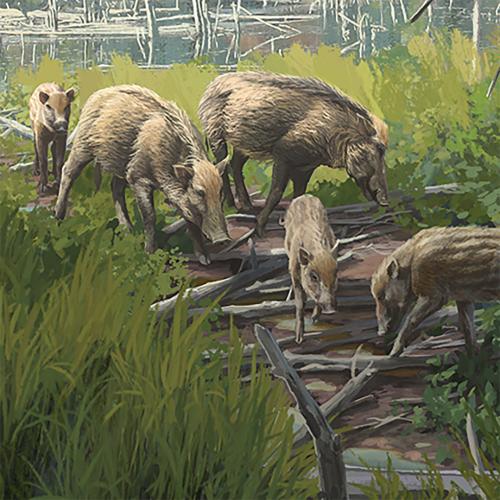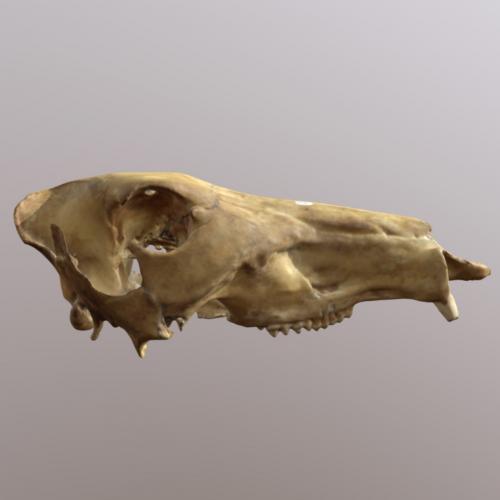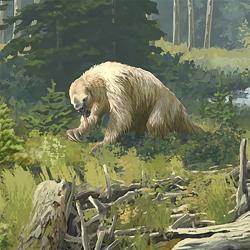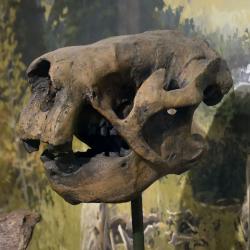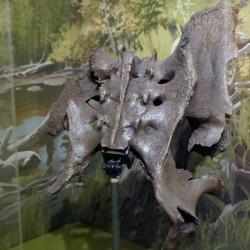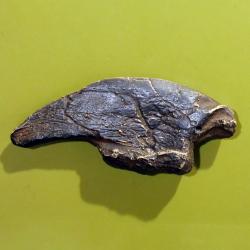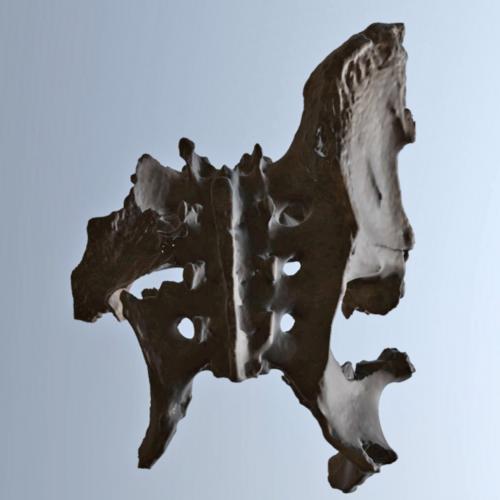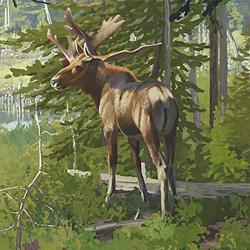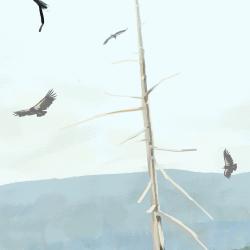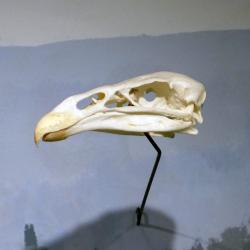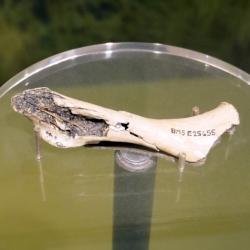
What is a Boreal Forest?
After a few thousand years, the tundra slowly turned to boreal forest, or taiga. The climate warmed slightly, and confiers grew into rich forests. Spruce, larch, and fir trees are the dominant plants in this forest, although smaller herbaceous plants, mosses, and grasses can be found. Lakes and other smaller water bodies are also abundant in the boreal forest. Today, boreal forest is the largest biome in the world. These forests make up 29% of all forest cover. Boreal forests are still found in the Adirondack Mountains.

Animals of the Boreal Forest
Fossils of boreal mammal species are the most abundant in the Ice Age collections of the State Museum. American mastodon fossils are found in sites across the state as well as species like giant ground sloth, peccary, stag-moose, giant beaver, and even California condor. These fossils show that the boreal forest was very diverse.
American Mastodon
Mammut americanum
Mastodons in northern North America fed mainly on spruce trees. Points on their molar teeth cut and crushed woody plants. They lived in herds and were quite common on the New York’s Ice Age landscape. Mastodons could reach 7 feet to 9 feet (2.1 to 2.7 m) at the shoulders, and weighed as much as 5 tons. This mastodon had an extra right, lower jaw wisdom tooth. This abnormality is seen in other mastodon, but it is unclear if the extra wisdom tooth affected its ability to feed.
Giant Beaver
Castoroides ohioensis
One of the largest rodents that ever lived, this extinct beaver grew to 8 feet (2.4 m) long and weighed as much as 275 pounds (125 kg)—about the size of a modern black bear. Like modern beavers, this extinct beaver had long incisor teeth. But they were not sharp and could not have cut down trees.
VIEW 3D SCAN
Giant Beaver Skull
https://sketchfab.com/3d-models/giant-beaver-skull-vcu-3d-3639-9abbbda9edb4458fa39e71a437602ebe
Flat-headed Peccary
Platygonus compressus
A distant relative of pigs, this extinct peccary grew up to 3 feet (0.91 m) long. With long legs, it was probably a fast runner. Today, three species of peccaries live in the southwestern United States and tropical America. This peccary’s canine teeth point straight up and down. In pigs, the canines are at an angle.
Jefferson’s Ground Sloth
Megalonyx jeffersonii
Unlike modern sloths, this extinct sloth lived mainly on the ground. It reached high into trees to eat twigs and branches.
Stag-moose
Cervalces scotti
Only a little bit larger than moose, the stag-moose lived in New York until approximately 11,700 years ago. The stag-moose reached 8 feet (2.5 m) in height and a weight of 1,562 pounds (708.5 kg). Its antlers could reach 6 feet in length. Like modern moose, the stag-moose lived in the Pleistocene’s wetlands, forests, and woodlands.
California Condor
Gymnogyps californianus
The California condor is the largest bird species in North America. This coracoid bone, a major flight bone, was recovered from the Hiscock Site in Genessee County, NY, but other finds have occurred in Texas and Florida. The fossil evidence shows that California condors lived over a very broad area during the last ice age.



